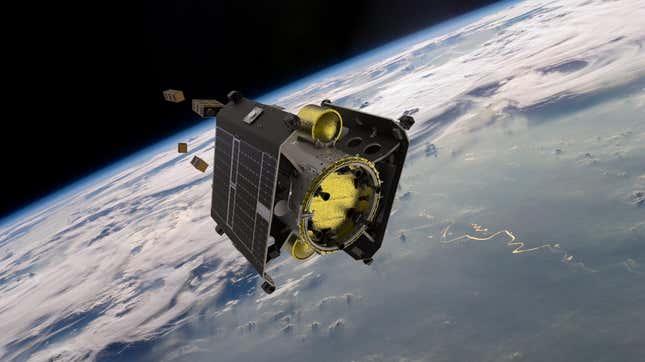
Satellite operators are often challenged by the horrendous amounts of data that satellites collect and transmit back to Earth. A recent experiment with prototype Amazon Web Services (AWS) software suggests cloud-based solutions, when used way above Earth’s actual clouds, can lessen the data load.
AWS, describing the experiment as the “first of its kind,” announced the test at the Amazon subsidiary’s re:Invent conference in Las Vegas on Tuesday. The test of the cloud-based prototype software transpired over the course of 10 months, and it presents a potential solution for satellite operators to better manage imagery and sensory data generated by orbiting spacecraft. The test was made possible through a collaboration that involved Italian company D-Orbit and Swedish startup Unibap.
A D-Orbit ION satellite carrier was chosen for the task, as reported in GeekWire. The satellite, along with several others, launched to space in January as part of a SpaceX ride share mission. ION’s processing payload, built by Unibap and powered by various AWS software tools (including machine learning algorithms), went to work, using the AWS platform to review images taken from space. ION, through AWS, was able to recognize which images were the most useful to send back to the ground. It also managed to reduce the size of the images, allowing for quicker downlinks.
“Using AWS software to perform real-time data analysis [on board] an orbiting satellite, and delivering that analysis directly to decision makers via the cloud, is a definite shift in existing approaches to space data management,” Max Peterson, AWS’ vice president of the worldwide public sector, said in a blog post, according to GeekWire. To which he added: “It also helps push the boundaries of what we believe is possible for satellite operations.”
AWS works alongside the government to build satellites and “reimagine space exploration,” according to its website, while adding that its efforts are geared towards “removing barriers to innovation on Earth.”
Transferring data from orbiting satellites, known as downlinking, requires spacecraft to connect to ground stations. The new AWS software reviews each image and reduces their size by up to 42 percent to increase the speed at which the images are downlinked. Peterson told CNBC that this endeavor “demonstrated the capability to increase the [satellite’s] productivity.”
This is not the first time AWS has worked to further space exploration, as it worked with Axiom Space’s first private space mission in April to send its AWS Snowcone to the International Space Station. The Snowcone transfers data and expedites information with little satellite connectivity.
D-Orbit’s vice president of commercial sales, Sergio Mucciarelli, told GeekWire that the expediency with which data is processed in space can be invaluable. He said satellite data has a “very low latency,” and by increasing the speed of downlinking, customers will gain a “high degree of confidence,” allowing them to access their workload more reliably and efficiently.
The experiment revealed that AWS has the ability to help companies perform “insight operations on the satellite, instead of having to wait until you can downlink back to Earth,” Peterson told CNBC. He added, “We can train models to recognize practically anything ... [giving] the ability to both improve the utilization of a really expensive asset in space and be able to take huge amounts of data and get insights and translate it into action faster.”
That may be so, but this is just a first step towards that goal. Further experiments will be needed, so it may be a while before we see the concept enter into the consumer realm.
More: Satellite Sets New Relay Record for Sending Martian Messages to Earth